#tudor england
Text
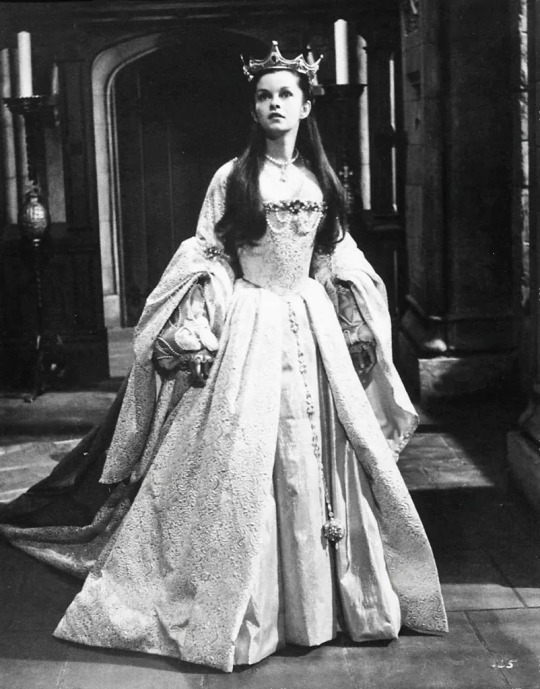
Genevieve Bujold as Anne Boleyn in Anne of the Thousand Days
#anne boleyn#queen anne boleyn#anne of the thousand days#genevieve bujold#tudor history#henry viii#the tudors#english history#tudor era#tudor period#tudor dynasty#tudor england#tudor rose#house of tudor#vintage movies#vintage films#1960s cinema#1960s movies#period film#period drama#costume drama#period piece#vintage
651 notes
·
View notes
Text
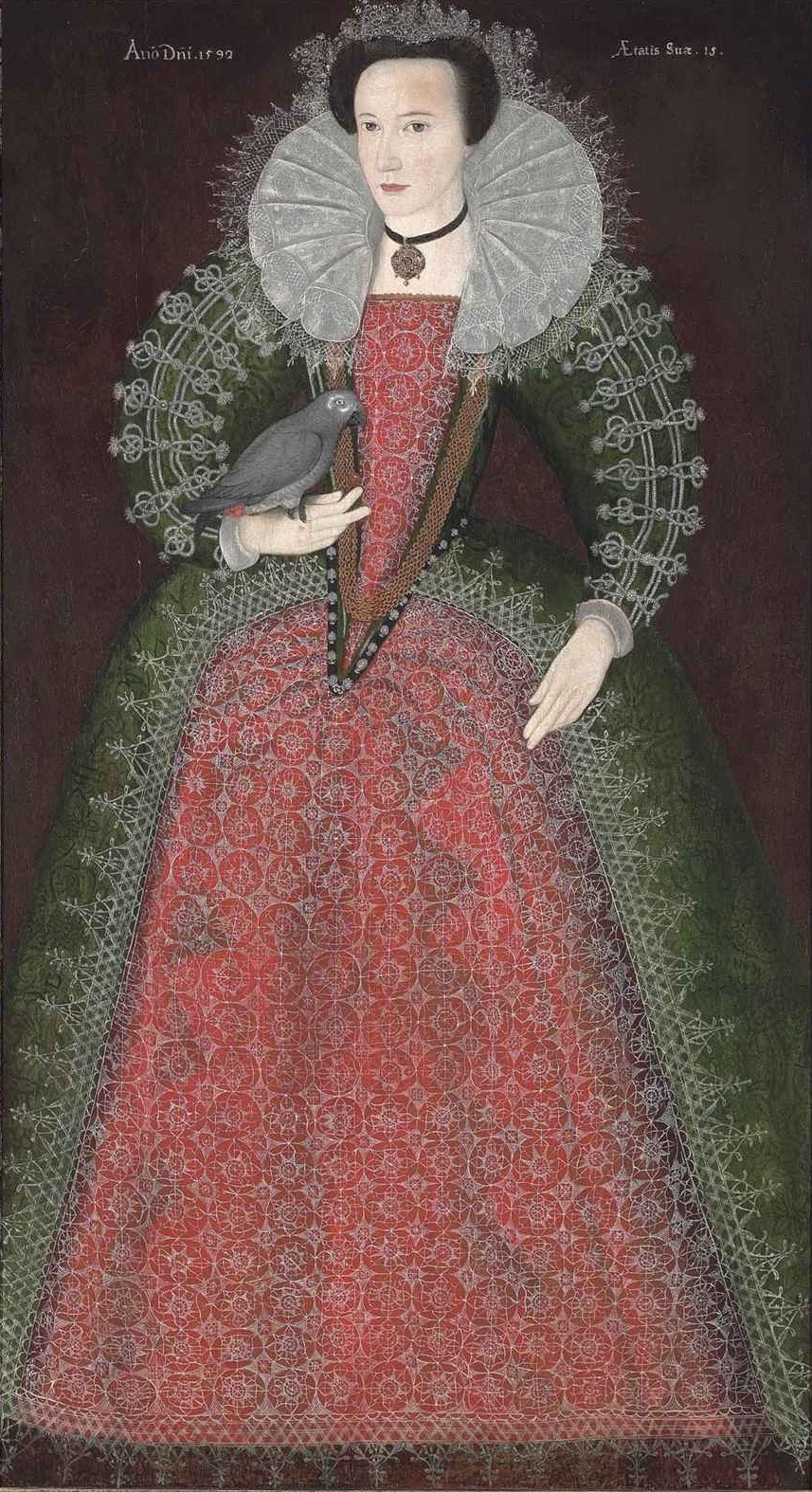
Portrait of a Lady with a Parrot, unknown artist (English School), 1592
#art#art history#English School#portrait#portrait painting#Tudor England#Elizabethan England#English Renaissance#English art#16th century art#oil on panel
151 notes
·
View notes
Text
Time Travel Question 46: Early Modernish and Earlier
These Questions are the result of suggestions from the previous iteration.
This category may include suggestions made too late to fall into the correct earlier time grouping. Basically, I'd already moved on to human history, but I'd periodically get a pre-homin suggestion, hence the occasional random item waaay out of it's time period, rather than reopen the category.
In some cases a culture lasted a really long time and I grouped them by whether it was likely the later or earlier grouping made the most sense with the information I had. (Invention ofs tend to fall in an earlier grouping if it's still open. Ones that imply height of or just before something tend to get grouped later, but not always. Sometimes I'll split two different things from the same culture into different polls because they involve separate research goals or the like).
Please add new suggestions below if you have them for future consideration. All cultures and time periods welcome.
#Time Travel#Early Modern#Aztecs#Tenochtitlan#Versailles#Louis XIV#Thames Frost Fair#The Original Amber Room#Vauxhall Gardens#Potlatch#Indigenous History#Pacific Northwest History#The Amazon#South American History#North American History#Cascadia Earthquake#History of Food#Queen Elizabeth I#Tudor England#Kamehameha the Great#Hawaiʻi#Hawaiian History
103 notes
·
View notes
Text
#my polls#polls#history#tudor era#tudor england#catherine of aragon#anne boleyn#jane seymour#anne of cleves#catherine howard#catherine parr#op
54 notes
·
View notes
Text
I’m lecturing on the English Reformation and Queen Elizabeth I (i.e., real-life Satine), and I love finding little gems like this in my research.



One of the writers snuck a real line from Elizabeth I into “Voyage of Temptation.”
It makes my historian heart very happy!
#Star Wars#The Clone Wars#Satine Kryze#Elizabeth I#Queen Elizabeth I#Duchess Satine#Tudor History#Tudors#Tudor England
199 notes
·
View notes
Note
I saw not long ago that the Duke of Norfolk is still a thing, and he's the #1 Duke outside the ones who are made up for being the King's close family, and he's a Howard descended from the guy who died at Bosworth and the Howards have been the top Catholic family in the UK for centuries. How did that work when Catholicism was illegal, and also BOTH the wives Henry VIII killed were members of that family? Why didn't Henry or a devout king take them out? Why didn't they go down with the Stuarts?
Great question!

The Howards have always had a remarkable talent for getting themselves into and out of trouble - the former because they were ambitious noblemen who aspired to high office and dynastic marriage alliances with the royal family, the latter because they were rich and powerful noblemen who were good at laying low for a while and coming up with a good plan b.
So to take Thomas Howard, his father and grandfather had gambled heavily on Richard III and lost almost everything when the Tudors came to power. However, Thomas managed to marry Anne of York, which gave the Howards a blood tie to the Tudors, and a route back into power as Lord Admiral. Highly successful military service against the Scots made Thomas an Earl and thereafter he was the Tudors' go-to military man in Ireland and France.
Then Thomas gambled again with Anne Boleyn, and when that ended disastrously, he very carefully made sure he ended up on the right side of things by presiding as judge over the trials of Anne Boleyn's "lovers." His prestige nevertheless took a hit and he had to spend some time away from court before eventually being recalled to deal with the Pilgrimage of Grace. (Notably, despite being the leader of the Catholic faction, Thomas had no problem with promoting his Protestant niece or brutally suppressing the Catholic Pilgrimage.)
After bringing down Cromwell, Thomas achieved his zenith of power by bringing about Henry's marriage to Catherine Howard. That gamble ended disastrously when Catherine's adultery was found out, leading to Thomas being exiled from court. He later found his way back into power, only to be thrown into the Tower along with his son and the rest of the Catholic faction when the Seymours came to power. And so it went.
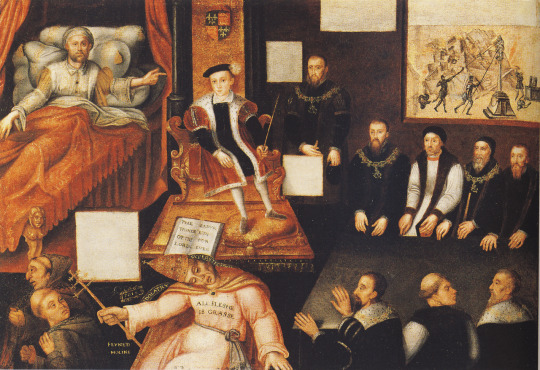
As to the issue with Catholicism, the thing to keep in mind is the "middle way" that the English Reformation pursued. When the dust had settled between the conflict between Edwardian Calvinists and Marian Catholics or crypto-Catholics, Elizabeth I's settlement didn't quite outlaw Catholicism. Catholic "recusants," as they were known in the statues, were fined for not attending Church of England services, but a wealthy family like the Norfolks could afford to pay. Now, it wasn't exactly safe - Thomas' son Henry Howard the Earl of Surray got himself executed by Henry VIII due to his extreme political stupidity, and his son Thomas got executed for trying to overthrow Elizabeth I in favor of Mary Queen of Scots, and his son Philip died of disease in the Tower of London, where he had been jailed for being a Catholic and plotting with Jesuits, although Philip's son actually did quite well as a diplomat and courtier under James I in part because the two shared interests in collecting art.
And so it went...
57 notes
·
View notes
Text

#country house#interior#architecture#higginsandcole#preppy#england#Tudor#tudor england#tudor history#great hall
61 notes
·
View notes
Text

Portrait of Mary I by Hans Eworth, 1554 (detail)
347 notes
·
View notes
Text
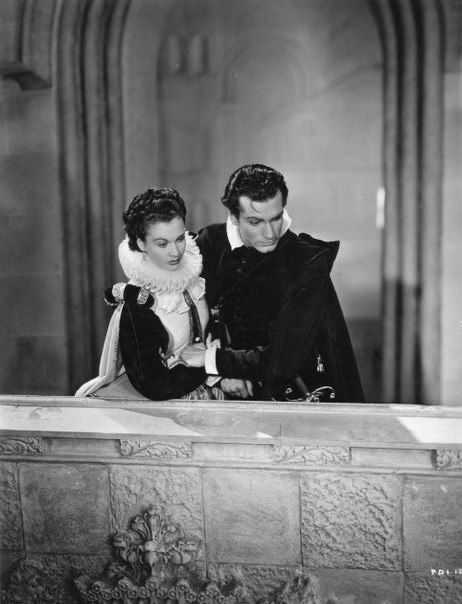
Vivien Leigh and Laurence Olivier in Fire Over England 1937 ♥️
#old hollywood#beauty#romantic drama#1930s cinema#historical drama#vivien leigh#laurence olivier#flora robson#spanish armada#elizabeth tudor#tudor england#1580s fashion
37 notes
·
View notes
Text

Detail from Catherine of Aragon and the Cardinals by William Bromley c. 1866
#catherine of aragon#katherine of aragon#catalina de aragon#art#art detail#tudor history#henry viii#the tudors#english history#tudor era#tudor england#tudor dynasty#tudor period#victorian painting#victorian art#william shakespere#art history
293 notes
·
View notes
Text


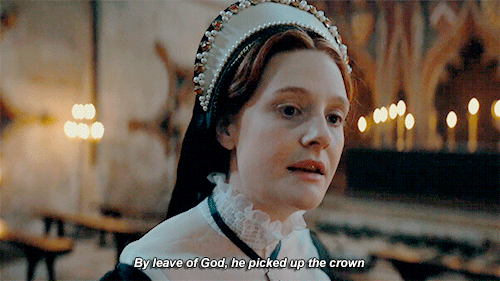

The boldness and scale of her achievement are often overlooked. The campaign that Mary led in the summer of 1553 would prove to be the only successful revolt against central government in sixteenth-century England. She, like her grandfather Henry VII and grandmother Isabella of Castile, had to fight for her throne. In the moment of crisis she proved decisive, courageous, and “Herculean”—and won the support of the English people as the legitimate Tudor heir. (X)
#mary i#henry vii#becoming elizabeth#perioddramaedit#historyedit#mine: perioddrama#mine: history#mine: gifs#mine.#rayedit.#mary tudor#henry tudor#isabella of castile#tudor history#becomingeelizabethedit#perioddrama#historicaldrama#romola garai#tudor england#i likes this scene
806 notes
·
View notes
Text
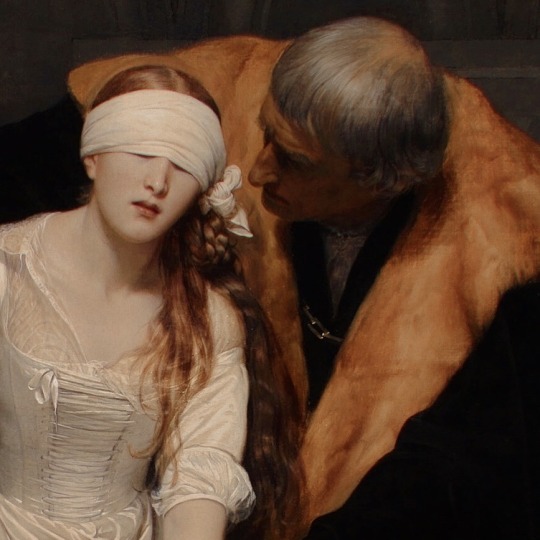
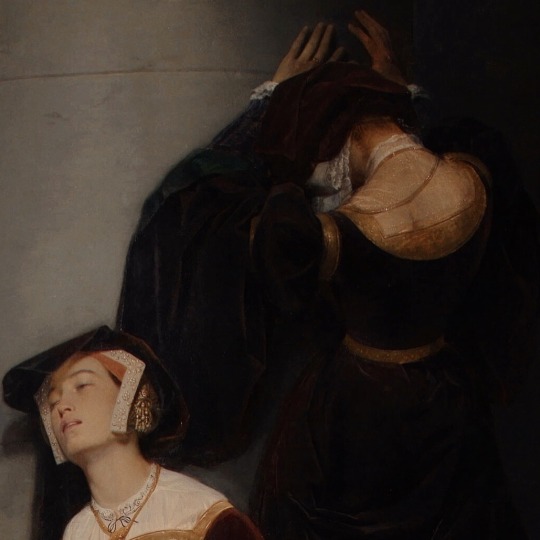
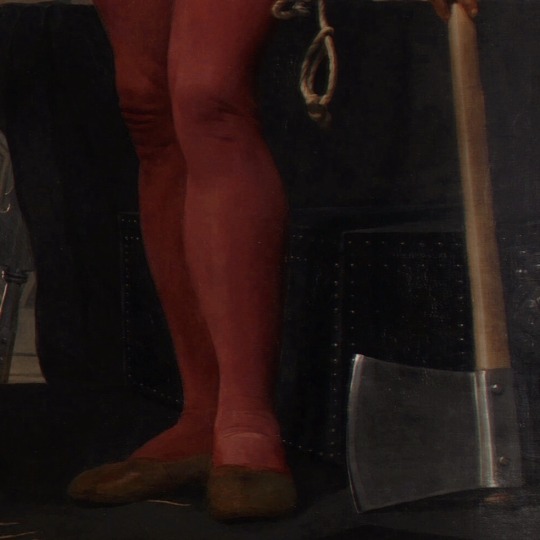

Details of Paul Laroche’s 1834 painting, “The Execution of Lady Jane Grey”.
“Where is it? What shall I do?” were some of the last words uttered by England’s “nine days” Queen while blindfolded and unsuccessfully reaching out for the scaffold upon which she rested her head shortly before her execution, which took place on 12 February 1554.
#lady jane grey#jane grey#tudor era#tudor england#tudor dynasty#medieval history#art#historical painting
270 notes
·
View notes
Text
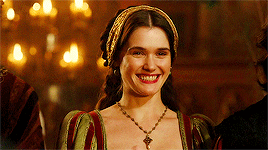



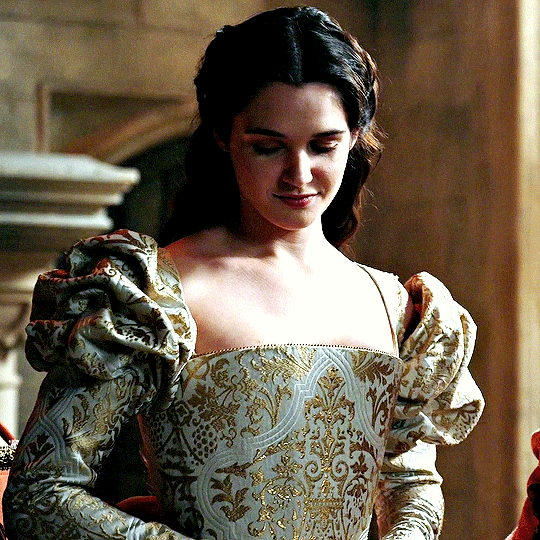
From Princess, to Queen, to Duchess
Mary Tudor (March, c. 1496; London, England - June, 1533; Suffolk, England) was an English princess, the third wife of King Louis XII of France and one of the two sisters of King Henry VIII. Mary was also the grandmother of Lady Jane Grey, who would become titular queen of England for nine days in 1553.
Mary’s father, King Henry VII, betrothed her to Archduke Charles —later Holy Roman Emperor, Charles V — in 1507. In 1514, however, political tribulations caused King Henry VIII to renounce such engagement and arrange a match between his beautiful, charming and yound sister and Louis XII, the sick and french monarch of 52. Since Mary was already in love with Charles Brandon, the first Duke of Suffolk, she made Henry promise that after Louis died she would be allowed to choose her next husband.
The marriage with the french king took place on Octouber of 1514, and Mary performed her role as wife and royal consort with kindness and dedication until he died on January of the following year. Before Henry or the new King of France, Francis I, could use her as a pawn in another political arrangement, Mary secretly wed Suffolk in Paris, probably in late February. Henry VIII was infuriated at the news, but eventually the pair regained the king’s favour, with Suffolk paying him a large sum of money and perhaps with the help and intercession of Cardinal Wolsey.Mary and Charles had four children, two daughters and two sons:
⇒ Henry Brandon (11 March 1516 – 1522);
⇒ Lady Frances Brandon (16 July 1517 – 20 November 1559), married to Henry Grey, 3rd Marquess of Dorset, and mother to Lady Jane Grey;
⇒ Lady Eleanor Brandon (1519 – 27 September 1547), married to Henry Clifford, 2nd Earl of Cumberland;
⇒ Henry Brandon, 1st Earl of Lincoln (c. 1523 – March 1534).
Mary had enjoyed unprecedented freedom during her teenage years at her brother's court. Just fourteen when her father, Henry VII died, she spent the next five years almost completely unchaperoned, encouraged to participate in every event, celebration and feast, each planned to display the opulence of the english royal family. She shared Henry's exuberance for spectacle and, for some time, was one of the central ladies of the court, admired and sociable. Like him, she loved dancing, masques, and parties; they were also very close, with the princess being the apple of the king's eye. It's rumored that Henry's famous warship, the Mary Rose, was named after both his favorite sister and his only daughter with Catherine of Aragon.
Upon her arrival in France, Mary was proclamed, by the Venetian Ambassador, to be "handsome and well favoured, grey-eyed; slight, rather than defective from corpulence, and conducts herself with so much grace, and has such good manners, that for her age of 18 years—and she does not look more—she is a paradise." She was particularly admired by her contemporaries for her long red hair, which she had inherited from the Plantagenet lineage through her mother, Elizabeth of York, who had also been an celebrated beauty.
After her second marriage, the Duchess of Suffolk lived a quiet life in the country, retired from court, although she had been know to have attended the famous Field of the Cloth of Gold at Guines, near Calais, in 1520. Often referred to as the French Queen, she was known to dislike Anne Boleyn and in defiance of her brother was to prove a firm supporter of her sister-in-law, Catherine of Aragon, in the matter of Henry VIII's annulment of his marriage to his first wife.
Mary visited London for the last time to celebrate the wedding of her eldest daughter, Lady Frances Brandon, to Henry Grey, Marquess of Dorset, in 1533. After suffering failing health for some years, Mary Tudor died on 25 June 1533 at the age of thirty-eight at Westhorpe Hall, Westhorpe, Suffolk, possibly of cancer. Henry VIII had requiem masses sung at Westminster Abbey for the repose of her soul and she was given a magnificent funeral, which her husband did not attend. Her body was interred at the Abbey of Bury St Edmunds. The Duke of Suffolk quickly remarried again, in that same year, to his fourteen-year-old ward, Katherine Willoughby (1519–1580), suo jure Baroness Willoughby de Eresby. Katherine had been betrothed to his eldest surviving son, Henry, Earl of Lincoln, but the boy was too young to marry, and Charles, to eager to add the heiress fourtune to his own.
#tudor dynasty#tudor queens#tudor history#tudor era#tudorqueens#the tudors#mary tudor#henry viii#elizabeth of york#charles brandon#tudor england#tudor period#tudor women#english royalty#house of tudor#medieval england#english history
33 notes
·
View notes
Text
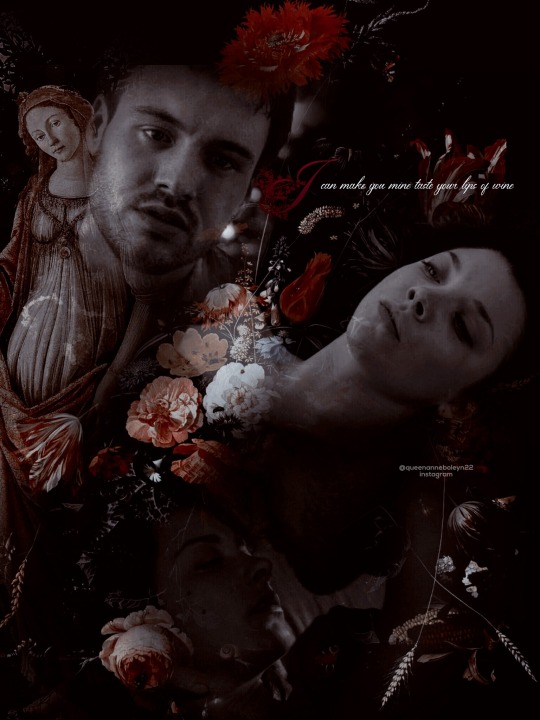
"Anne and Wyatt shared a love of poetry and literature. They were intellectual equals who engaged in lively conversations about politics, religion, and the arts." - Eric Ives, "The Life and Death of Anne Boleyn"
Anne Boleyn and Thomas Wyatt had a close friendship that has been the subject of much speculation over the years. They were both members of the intellectual circle at court, and they shared a love of poetry and literature. Some historians believe that they may have been romantically involved, but there is no concrete evidence to support this theory. Yet Thomas was one of Anne's closest confidants, and he was a loyal supporter throughout her rise and fall at court. He wrote several poems about her, including "Whoso List to Hunt," which is believed to be a coded message about his love for her. In the poem, Wyatt compares Anne to a deer that he can never catch, suggesting that he is unable to win her heart.
"Anne Boleyn and Thomas Wyatt were kindred spirits who shared a love of literature and the arts. Their friendship was a rare and precious thing in a world dominated by politics and intrigue." - Joanna Denny, "Anne Boleyn: A New Life of England's Tragic Queen"
"Anne and Wyatt's relationship was a source of gossip at court, and many speculated that they were more than just friends. However, there is no evidence to suggest that their relationship was anything but platonic." - Retha M. Warnicke, "The Rise and Fall of Anne Boleyn"
#perioddramaedit#the tudors#anne boleyn#history#natalie dormer#edit#thomas wyatt#anne x wyatt#jamie thomas king#tudor era#thetudorsedit#historical#eric ives#tudor england#tudorsedit#natdormeredit#historical figures#historyedit#tudor history#perioddramacentral#tudor period#period drama#perioddramasource#perioddramasonly#tudorssource#tudors#thetudors#the tudors edit
95 notes
·
View notes
Note
How did cardinal Wolsey manage to go from being a religious figure to basically our life’s version of asoiaf ‘hand’? Was cardinals the second authority after the king because cardinal richelieu acted like this in france in the next century?
It's not that they were the second authority per se, but since the clergy were the most educated people in medieval society, it was quite common for them to end up in major government posts - especially if it involved specialized skills like knowledge of canon law.
So for example, if you go down the list of Lord Chancellors of England in the Middle Ages, they're almost all archbishops, bishops, deans, deacons, archdeacons, abbots, etc.. It's not until the 13th century that we start seeing barons or judges or justices or lawyers on the list, and even then they are very much in the minority.
#medieval history#clergy#thomas wolsey#medieval law#canon law#medieval government#medieval bureaucracy#lord chancellor#privy council#tudor england
48 notes
·
View notes
Text

the death of amy robsart by william frederick yeames, exhibited in 1877
#amy robsart#tudor england#robert dudley#amy dudley#elizabeth i#william frederick yeames#neoclassicism#19th century art#oil paintings#blood
338 notes
·
View notes